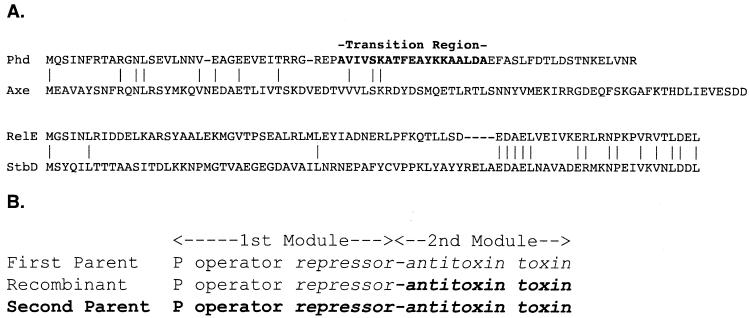FIG. 2.
(A) Evidence of recombinant antitoxins. Inspection of selected antitoxin alignments provided evidence of recombination events within the antitoxin sequences. The N termini of Phd and Axe are marginally similar, but their C termini, and their corresponding toxins, are dissimilar. The apparent recombination junction revealed by the alignment of Axe and Phd falls within the repressor-antitoxin transition region (indicated by bold type) as defined by deletion mapping of Phd (Table 1). Conversely, the N termini of RelE and StbD are dissimilar, but their C termini, and their corresponding toxins, are very similar, as previously noted by Hayes (25). The complementary RelE/StbD recombination junction noted by Hayes occurs in a comparable position. Protein sequences were globally aligned by using Clustal X (28) with default parameters. Alignments of these proteins have been previously reported (20, 25). (B) Modular model for antitoxin-toxin systems. We propose that toxin-antitoxin systems are a composite of two evolutionarily separable modules: an operator-repressor module and an antitoxin-toxin module. Recombination between modules may contribute to operon and antitoxin diversity. A schematic of two analogous parental genetic structures (the first in plain text, the second in bold text) and a recombinant structure are depicted. Such a recombinant is likely to be functional even if the parental structures are distantly related or heterologous.

